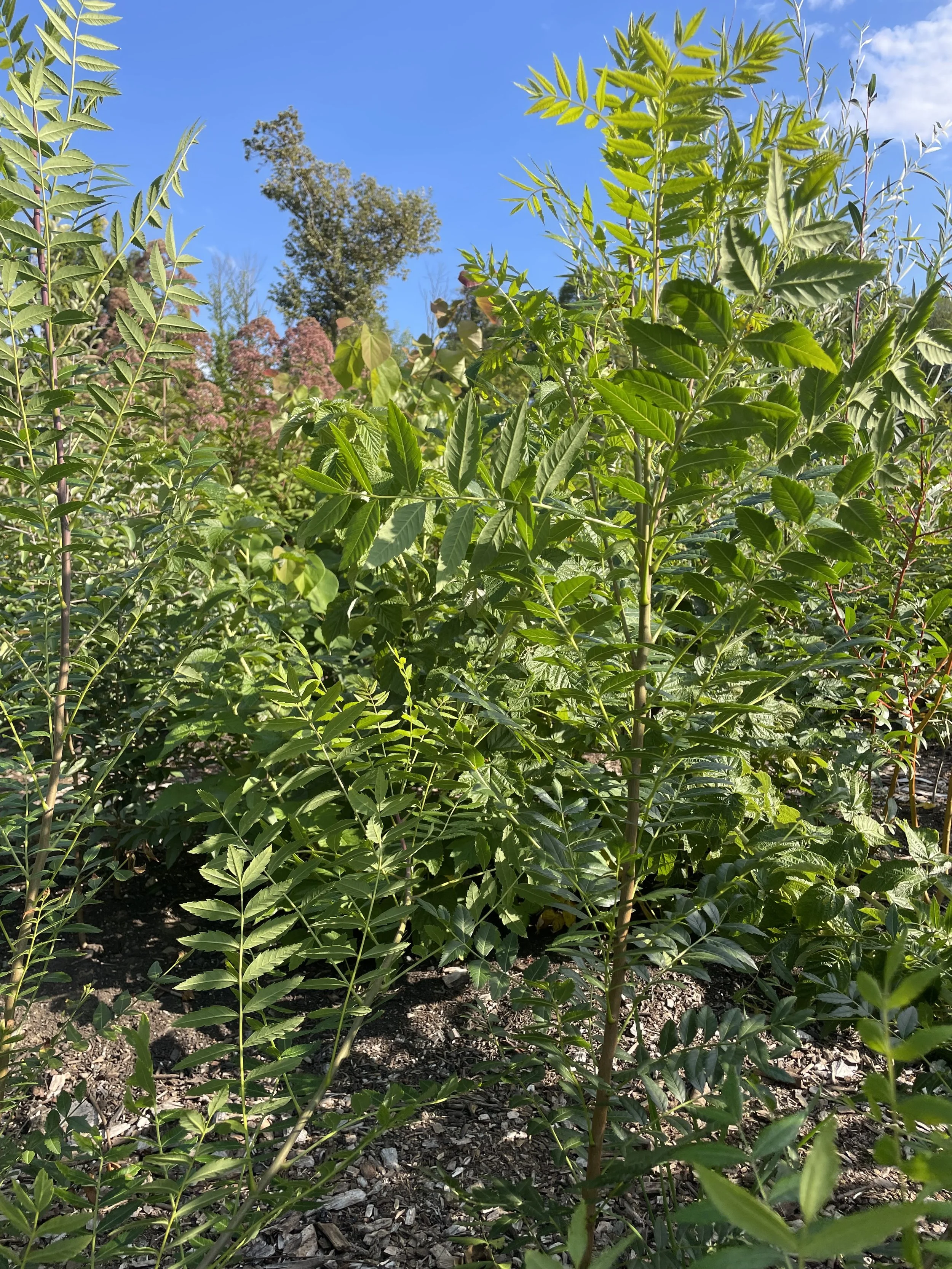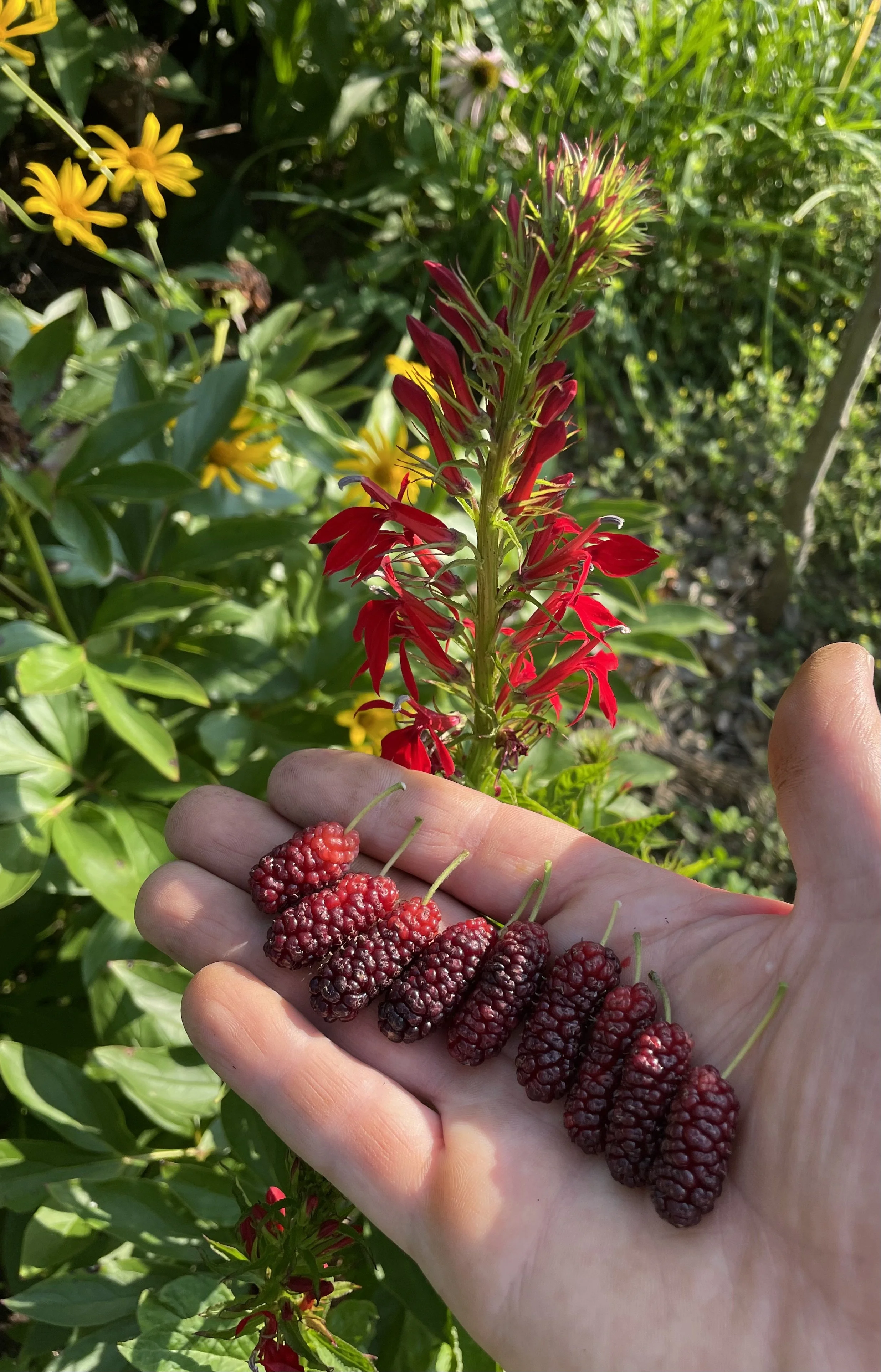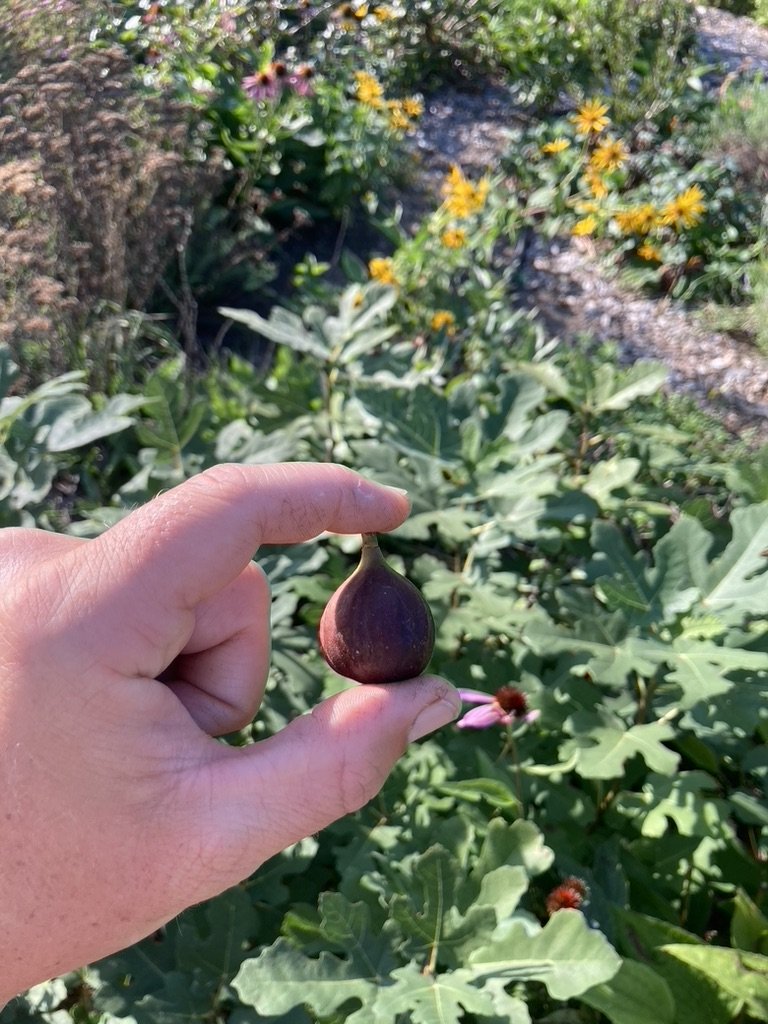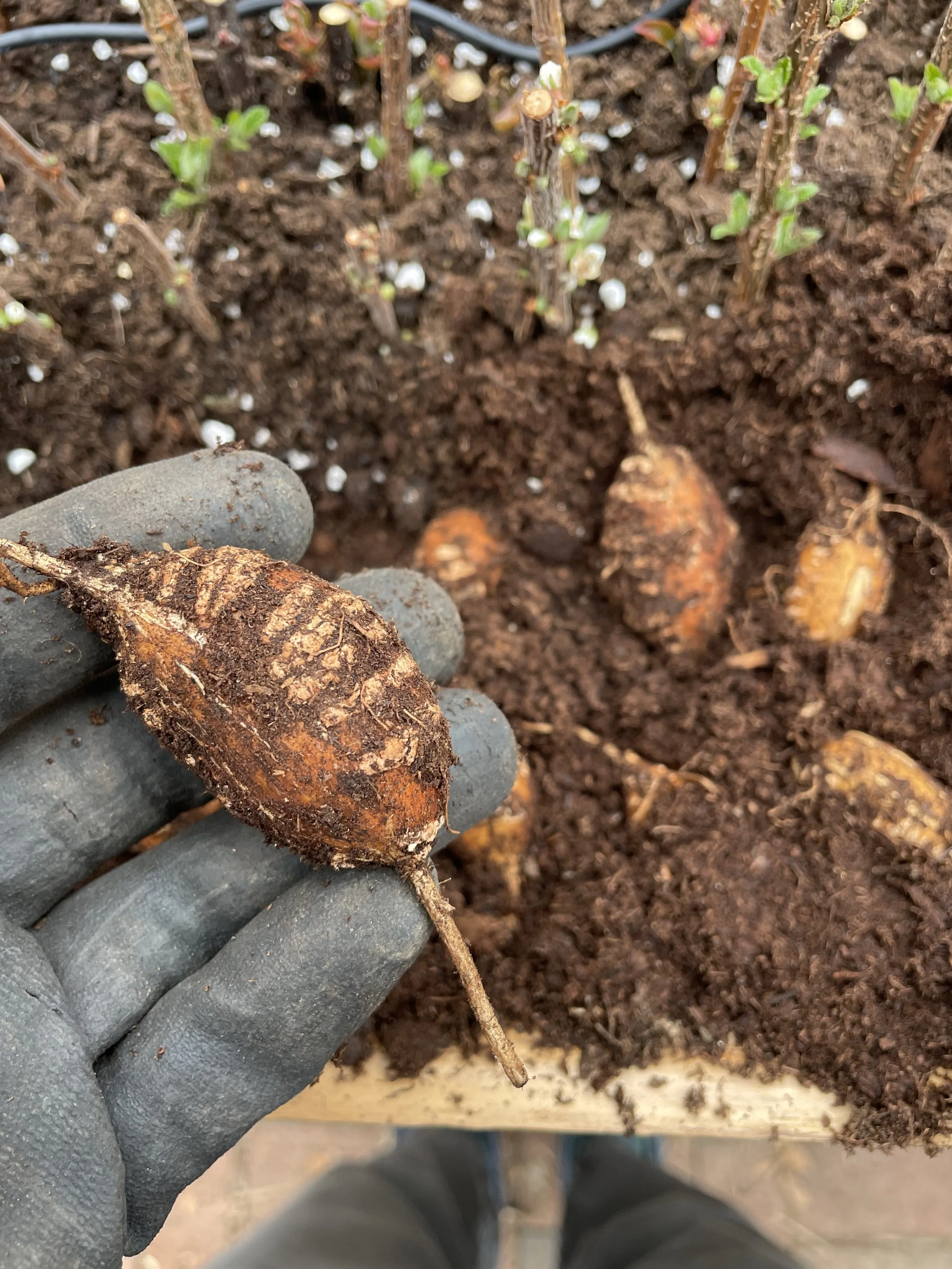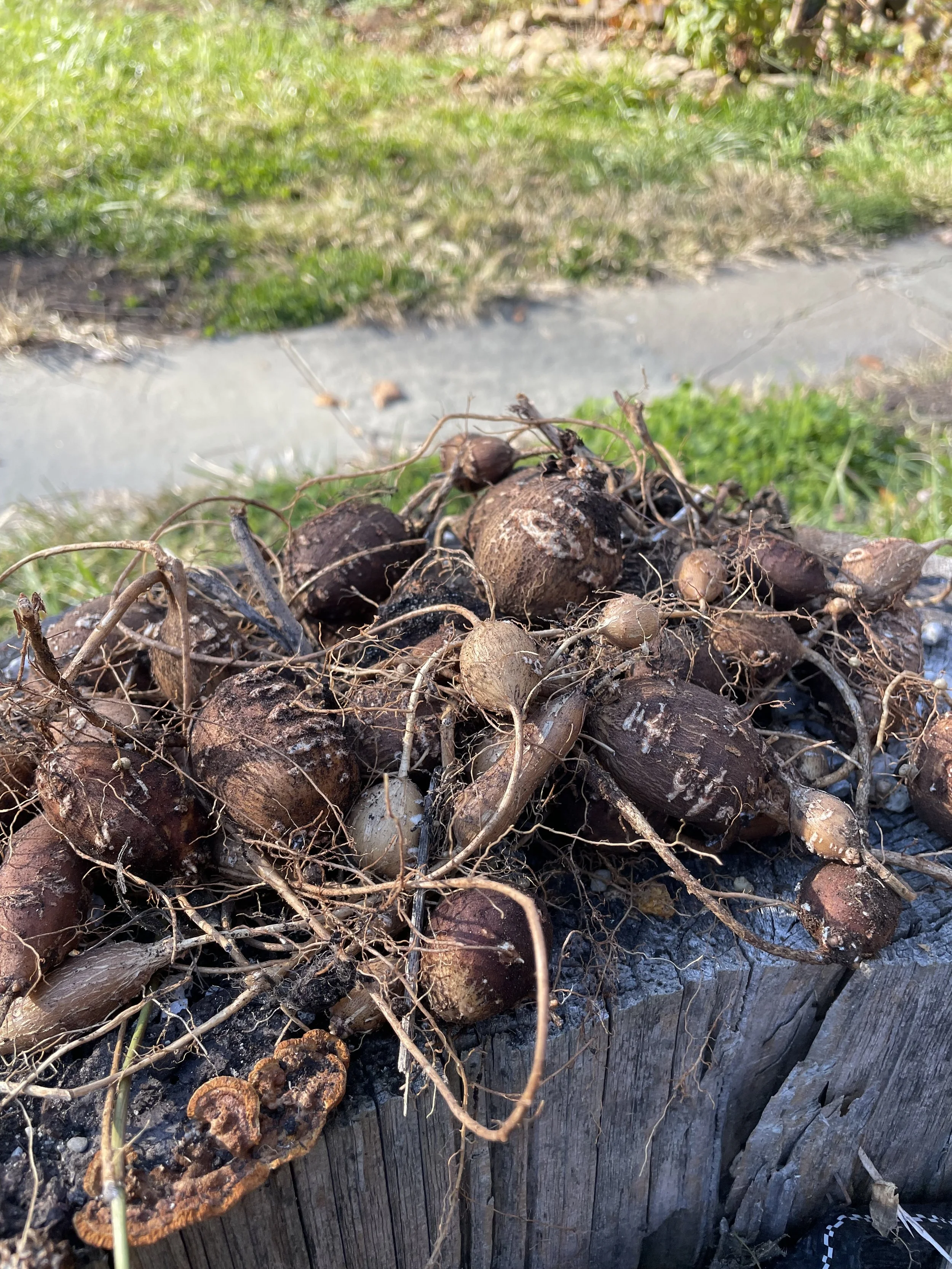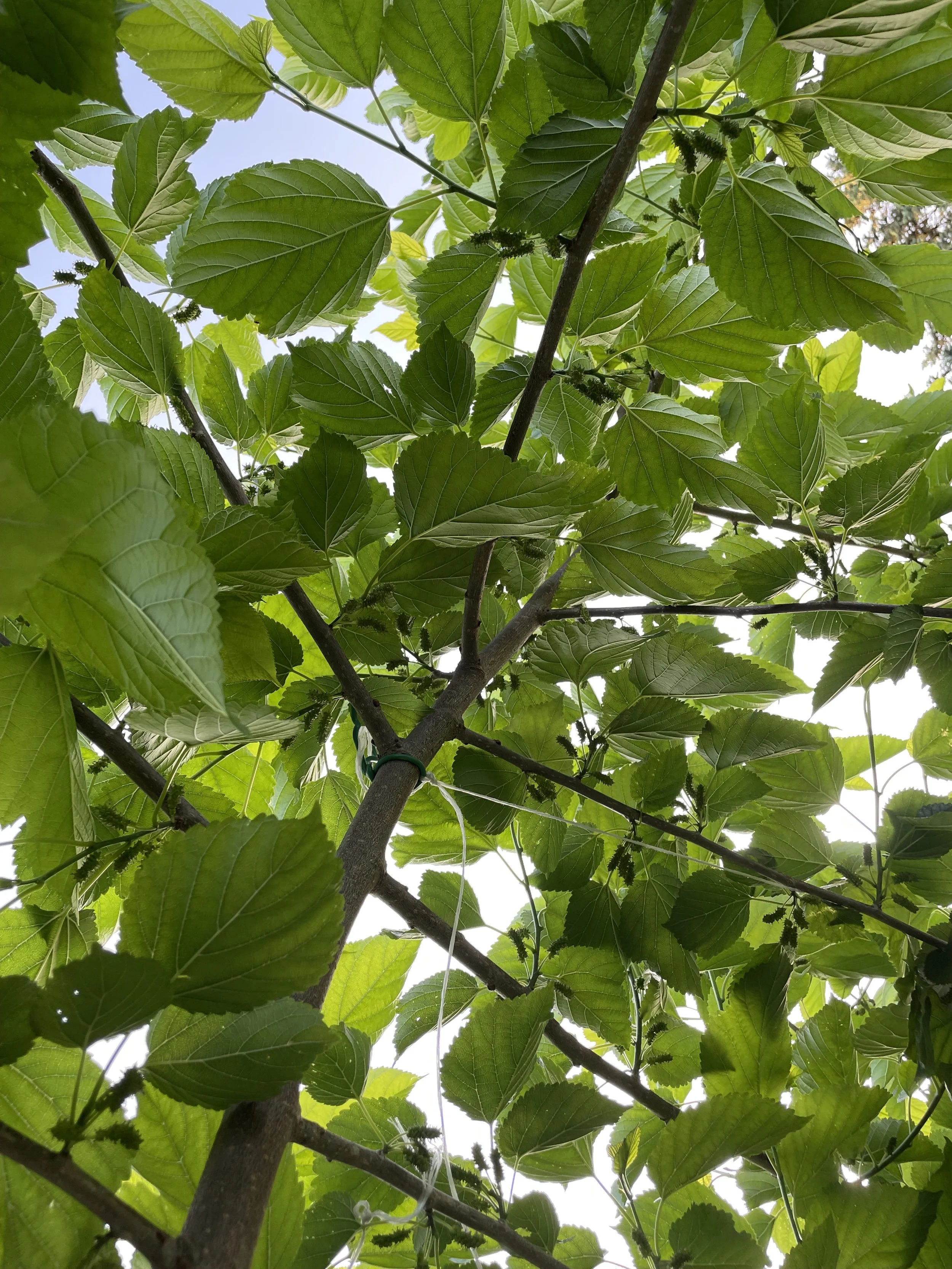 Image 1 of 4
Image 1 of 4

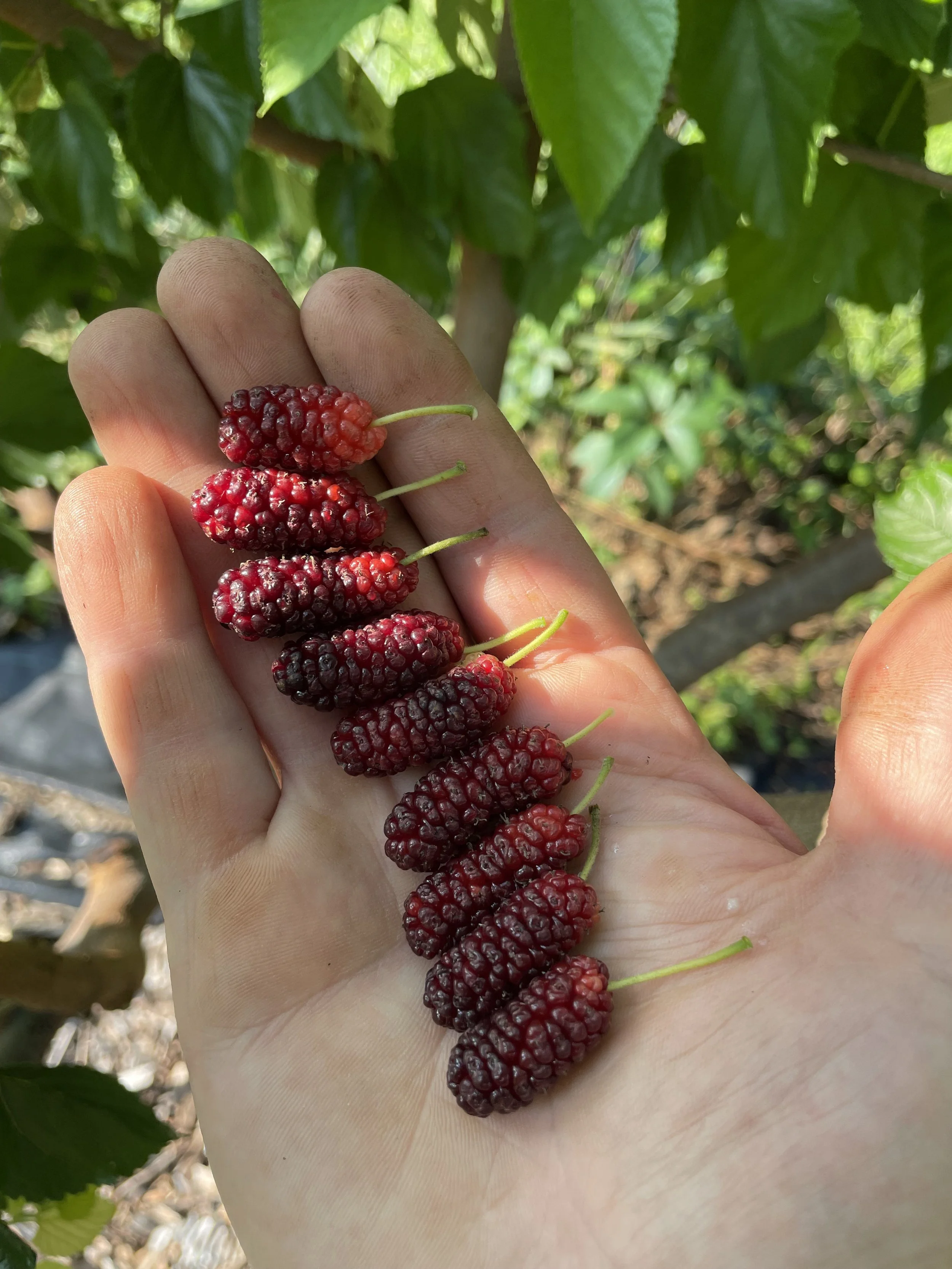 Image 2 of 4
Image 2 of 4

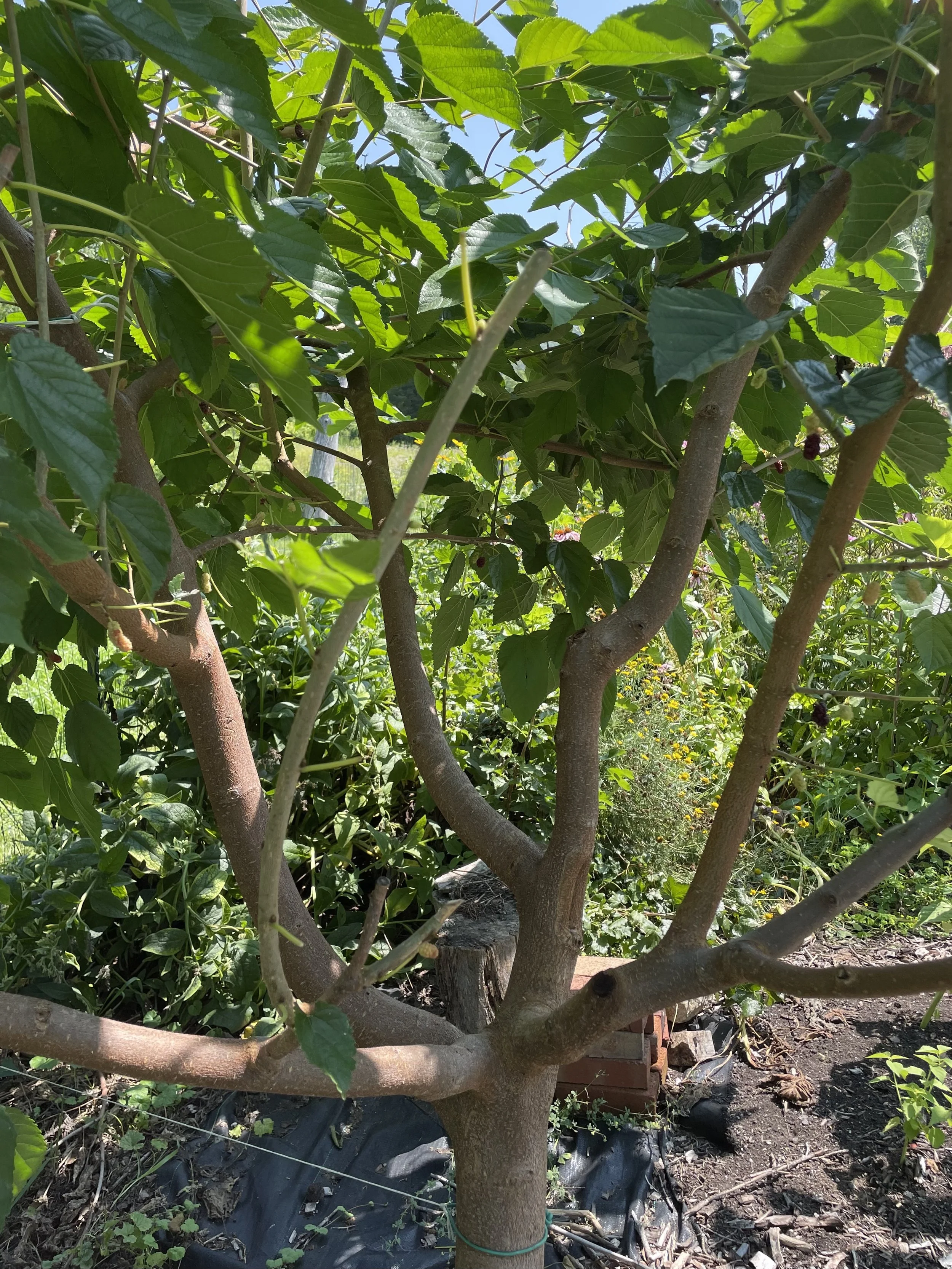 Image 3 of 4
Image 3 of 4

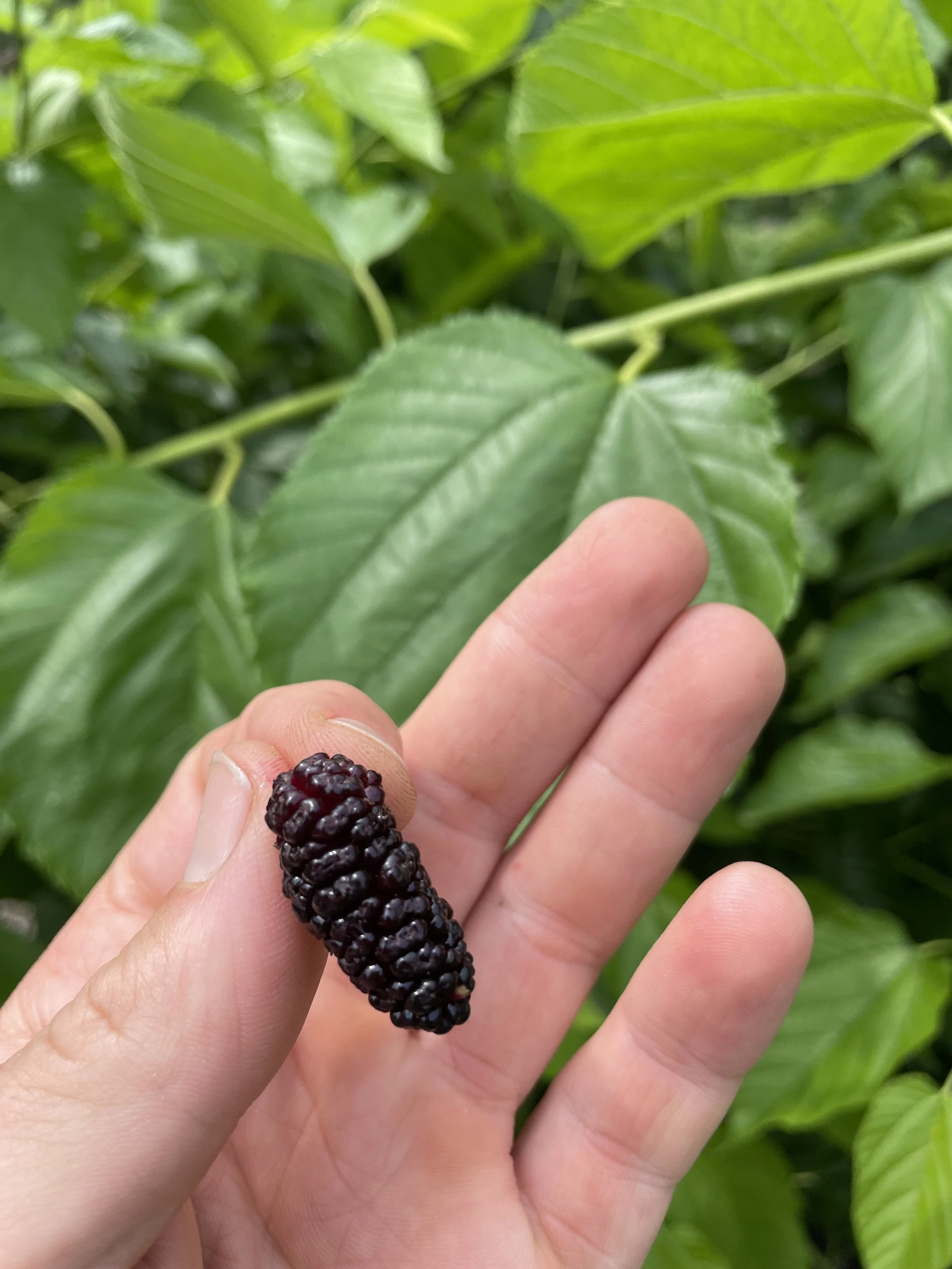 Image 4 of 4
Image 4 of 4





Grafted Mulberries
(Morus spp.)
There’s nothing like having a mulberry tree in your back yard. They are low maintenance, fast growing, extremely productive fruit trees. Unpruned, mulberries can reach 30’+ at maturity, but with regular pruning can be kept much shorter and wider for a more accessible harvest. All of the mulberries we offer are self fertile and grafted on morus alba rootstock.
Illinois Everbearing: A personal favorite and the standard against which other mulberries are compared. Illinois Everbearing provides sweet, juicy berries over an extended season, with fruit ripening continuously from July through September.
Kokuso: Large, sweet dark berries all summer. A slightly shorter harvest window than Illinois everbearing, but a slightly hardier tree. Exceptionally large leaves are protein rich and beloved by our sheep.
Gerardi Dwarf: An everbearing mulberry that tops out at 8’, making both harvest and growing in a small yard much easier. Gerardi is a slower grower than most mulberries, but branches have very close internodes along the stem, meaning branches become absolutely packed with berries.
Oscar: A concentrated crop mulberry, where all fruit ripens in a small window. Extra juicy berries make Oscar great for mulberry juice and wine, since entire branches of ripe berries can be shaken or stripped onto a tarp and harvested in bulk.
Silk Hope: Sweet, delicious berries on a vigorous tree. Very similar to Illinois Everbearing, but more resistant to popcorn disease if that is a problem in your area
Flavor profile: Sweet, juicy, blackberry, low-acid
Hardiness zone: 5-9
Light: Full sun
Soil: Well-drained, organic soil with pH 5.5-7
Mature height: 30’+
Spacing: 20’-25’
Pollination: Self fertile
Planting tips: Mulberries are adaptable to soil type but do not do well with wet feet. Dig a large planting hole and loosen the sides with a shovel to allow vigorous roots to stretch out easily. Stake trees at planting time, as large leaves and fast upward growth can make young mulberries unstable in the wind.
Growing tips: To keep fruit accessible, prune mulberries every winter to establish an open center. Prune again 1-3 times during the growing season, to remove upward growth, crossing branches, and to maintain a controlled, outward growth habit.
We are unable to ship this product outside the contiguous US or to California.
All Winter ‘25-’26 orders are for dormant, bare root plants and will be shipped or available for pick up in March-April ‘26.
(Morus spp.)
There’s nothing like having a mulberry tree in your back yard. They are low maintenance, fast growing, extremely productive fruit trees. Unpruned, mulberries can reach 30’+ at maturity, but with regular pruning can be kept much shorter and wider for a more accessible harvest. All of the mulberries we offer are self fertile and grafted on morus alba rootstock.
Illinois Everbearing: A personal favorite and the standard against which other mulberries are compared. Illinois Everbearing provides sweet, juicy berries over an extended season, with fruit ripening continuously from July through September.
Kokuso: Large, sweet dark berries all summer. A slightly shorter harvest window than Illinois everbearing, but a slightly hardier tree. Exceptionally large leaves are protein rich and beloved by our sheep.
Gerardi Dwarf: An everbearing mulberry that tops out at 8’, making both harvest and growing in a small yard much easier. Gerardi is a slower grower than most mulberries, but branches have very close internodes along the stem, meaning branches become absolutely packed with berries.
Oscar: A concentrated crop mulberry, where all fruit ripens in a small window. Extra juicy berries make Oscar great for mulberry juice and wine, since entire branches of ripe berries can be shaken or stripped onto a tarp and harvested in bulk.
Silk Hope: Sweet, delicious berries on a vigorous tree. Very similar to Illinois Everbearing, but more resistant to popcorn disease if that is a problem in your area
Flavor profile: Sweet, juicy, blackberry, low-acid
Hardiness zone: 5-9
Light: Full sun
Soil: Well-drained, organic soil with pH 5.5-7
Mature height: 30’+
Spacing: 20’-25’
Pollination: Self fertile
Planting tips: Mulberries are adaptable to soil type but do not do well with wet feet. Dig a large planting hole and loosen the sides with a shovel to allow vigorous roots to stretch out easily. Stake trees at planting time, as large leaves and fast upward growth can make young mulberries unstable in the wind.
Growing tips: To keep fruit accessible, prune mulberries every winter to establish an open center. Prune again 1-3 times during the growing season, to remove upward growth, crossing branches, and to maintain a controlled, outward growth habit.
We are unable to ship this product outside the contiguous US or to California.
All Winter ‘25-’26 orders are for dormant, bare root plants and will be shipped or available for pick up in March-April ‘26.

